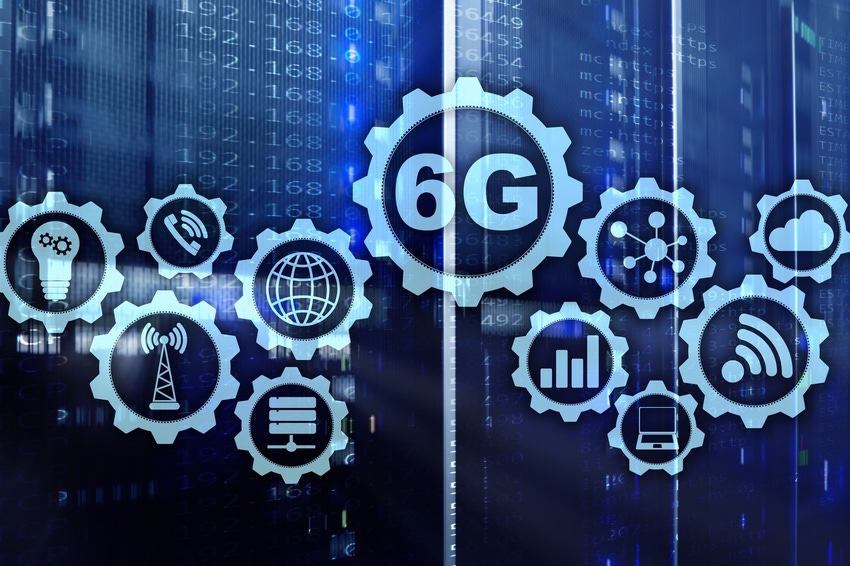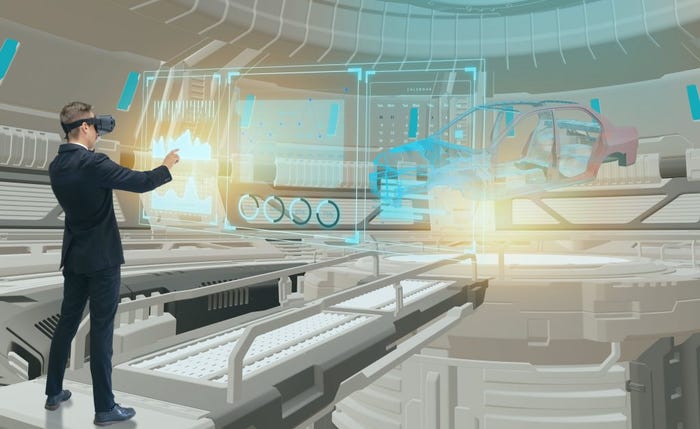What is 6G?
As the marketing drum for 6G starts banging in the distance, we’ve gathered some industry experts together to describe what it will be, what it will do, and what lessons can be drawn from the 5G rollout.
May 9, 2023

As the marketing drum for 6G starts banging in the distance, we’ve gathered some industry experts together to describe what it will be, what it will do, and what lessons can be drawn from the 5G rollout.
Since the telecoms industry has decided upon a progressively numerical gradience for measuring technological progress, 6G was always going to follow 5G at some point. While we don’t have a clear view of exactly what 6G will be at this stage – and indeed we are in some respects still shaking down the use cases for 5G – the hype has already begun, as we start to hear more firms publicly ponder what the next generation of connectivity standards might bring with it.
It seems therefore a good time to try and start defining what it is 6G might be able to do over and above what 5G is capable of delivering – a comprehensive analysis of which you can find here. Until specifications are set and new technologies come into clearer focus, this comes with the caveat that this is partly still speculation time – but it’s always a good idea to think about where we are headed as an industry, and the pontification is only going to increase in the months and years to come.
When will 6G arrive?
While it’s too early to say when consumer ready 6G services will start being marketed and sold with much specificity, it is possible to put a rough estimate on it based on expected standardisation and specifications timelines. Patrik Persson, 6G Program Manager Director at Ericsson Research told us:
”We expect first commercial 6G deployments around 2030. To ensure this the standardization in 3GPP needs to start with requirement input during 2024 and having the first 3GPP specifications ready during 2028. Even though 6G systems will be designed with no constraints on previous mobile generations due to backward compatibility while at the same time provide adequate performance for the new yet to emerge use cases of 2030s, this development needs to be built on the unprecedent momentum and innovation engine of 3GPP, complemented by forums link O-RAN Alliance for specific interfaces.”
Milind Kulkarni, VP, Wireless Labs at InterDigital points out there will of course be overlap with 5G once it does emerge: “While standards bodies like the ITU are currently outlining visions for what 6G will look like, and development is very much underway, we won’t “see” 6G for some time. The first 6G technical specification is expected to finish in 2028, and commercial deployments are set to begin in 2030. Just like 4G and 5G have coexisted, and will continue to do so for some time, 6G and 5G will exist simultaneously too.”
Sue Rudd, Director, Networks and Service Platforms at TechInsights makes the point that operators may not have the ability to go all in on 6G investments until the 5G process is complete, which could be a factor when it comes to 6G’s arrival date:
“Despite attempts to hold the 3GPP rhythm during the Pandemic, 3GPP releases are starting to bump into one another in the marketplace – especially if there is an economic slow down in the next year. Release 17 deployment is likely to overlap with Release 18 in 2024/25. Tight CAPEX budgets will also make it difficult for operators to make 6G investments before 5G is fully complete with 3GPP Releases 19 and 20. Release 21 – which is the official first 6G release – is likely therefore to be initially specified in 2027 with limited deployment about 24 months later in 2029 and true commercial scale 6G deployments in 2030.”
So the consensus seems to be that D-day for 6G is currently set for 2030. But what new tech will underpin it?

What will the technological differences be between 5G and 6G?
The initial technical differences between 5G and 4G networks were blurry because it was a mesh of existing 4G network infrastructure overlaid with new 5G radios. 5G standalone, or 5G SA, is ‘proper’ 5G in the sense that it does not relay on 4G LTE technology. This is being deployed in sites around the world now, and many argue it is with this that the difference between 4G and 5G will be more apparent.
In terms of how the underlying technology of 6G is likely to differ from our current cutting edge network equipment and software, Persson sees a closer integration between telecoms and the cloud as fundemental:
“Already with 5G and even more in the case of 6G, the telecom industry is merging with the cloud industry to leverage the flexibility that the cloud technologies provide. On the path toward a 6G architecture, the merge of the mobile and cloud industries is facilitated best through an open horizontal architecture where each horizontal layer can be developed and specified at its own speed. Furthermore, the openness through horizontal layers in the new network architecture allow development of local solutions and eco-systems within each layer, without violating global interoperability across the key interfaces (such as between the end user device and the RAN), while also retaining industry scale thereby avoiding fragmentation.”
Rudd adds: “While 5G Phase 2 Standalone (SA) represented a massive shift to a new Cloud native functional architecture, 6G – so far at least – appears to be about better, faster and more performance, throughput, capacity with seamless convergence, and large scale interactive services based on 5G SA architecture. So the underlying technology – while profoundly different from the physical nodes and ‘boxes’ of 4G and 5G NSA is an optimized evolution of 5G SA where the big ‘step function’ is currently occurring.
“On the RF side, the big steps from 5G to 6G will include sub-Terahertz and perhaps Terahertz spectrum (100 GHz to 3 THz), Integrated Sensing, Positioning and Communications, New Communications Techniques like Holographic MIMO enabled by Meta-Material “Smart Surfaces”. On the System side, steps will include greater application of AI techniques to the network, Integrated Terrestrial and Non-Terrestrial Communications, and Stronger Security.”
So that’s the nuts and bolts of it in so far as we can say at this early stage, but what will 6G actually do?

What will be the ‘killer apps’ of 6G?
This is perhaps a difficult question since there remain difficulties in identifying solid new use cases for 5G that are wholly distinct from what you could do with 4G, at least on the consumer side. Some of what is anticipated with 6G involves proper realisation of some of what was promised with 5G, and other predictions involve more immersive environments – or as Persson puts it a ‘cyber-physical continuum’:
“We can expect the society of 2030 to have transformed around increasingly advanced technologies, where 5G plays a key role and the future networks act as the communication and information backbone, allowing anything to communicate anywhere and anytime. With 6G it becomes possible to move in a cyber-physical continuum, between a programmable digital representation of the physical world of sensing, action, and experiences.. We will be able to experience human sensory experiences conveyed digitally over distances, as “if we were there” physically. Intelligent machines (or AIs) will cooperate and interact in the digital world over real-world connections.”
AI is hitting the headlines all across the media at present as rapidly developing generative AI programs provide both wonder and worry when considering the disruptive effect automation and Large Language Models might have on how we live and work in the future. Sarah McBride, Senior Analyst at Omdia sees 6G as key to the proliferation of automation and AI:
“6G is expected to go beyond the vertical use case that dominates 5G, moving from the digital economy to a completely automated and intelligent economy state that provides everything as a service and a completely immersive experience. 6G will be primarily about connecting machines that are involved in handling very complex tasks, such as remote surgery, which will leave humans to focus on what they want to achieve, rather than how to carry out the task.
“Other 6G use cases include wireless factory automation which require very sophisticated operations such as communication with ultra-high reliability and ultra-low latency, high-resolution localization (at the centimetre level), and high-accuracy inter-device synchronicity (within 1 µs). Other applications for 6G include high-resolution imaging and sensing, accurate positioning, wearable displays, mobile robots and drones, specialized processors, and next-generation wireless networks.”
Kulkarni describes what 6G will ‘do’ as: “Firstly, better eMBB means 6G will deliver higher data speeds and immersive communications that extend the user experience and human to machine interfaces. Example use cases include XR, holographic communications, remote multi-sensory telepresence, healthcare, and robotics.
“Secondly, better mMTC will see 6G support a larger number of devices at lower power and data rates. This ubiquitous connectivity will help to monitor, track and control a massive number of devices and sensors, and gain insights from real-world objects. This will help to expand and rollout new applications in smart cities, transportation, logistics, health, energy, environmental monitoring, agriculture and infrastructure.
“Finally, enhanced URLLC will deliver extreme reliability, extreme low latency and precise positioning and connection density that will be critical for specialised use cases, such as full automation and industrial control and operation, robotics interaction, drone operation, and remote medical surgery. These capabilities will create opportunities for new classes of devices, services and deployments.”
So that’s a broad sweep of what some of the capabilities of 6G might be – but of nothing about telecoms deployments is easy or cheap…

The challenges in deploying 6G
Building out new 5G infrastructure, whether its RAN, Core or small cells, continues to cost mobile operators serious money. The 6G rollout will no doubt have its own, perhaps somewhat different investment costs and challenges.
Rudd points to the demands on networks stemming from the types of intensive use cases, like the metaverse, that 6G is touted as delivering: “The Metaverse has been touted as the anchor application for 6G that demands all the speed, interactivity and human machine interactivity that 6G brings. And even though the ‘hype’ for the metaverse has cooled down lately, that may be an indication that people are working hard on the tough issues before the Metaverse becomes real in 3 to 5 years or so.
“However, the Metaverse has major network implications. It breaks todays 1990s Internet design, since it brings a new Multiverse of Multiple Parallel Networks and Domains –a MultiNet – that demands Rules and Policies on who, how and when people and machines can interact across the MultiNet Domains. This will finally collapse the limited TCP-IP Internet architecture and force a far more robust paradigm than the ‘Best Efforts, Trust Anyone’ model that is already badly broken.”
McBride adds that an early one pain point could involve Thz spectrum allocation:
“Other challenges involve the THz bands which will need to be overcome a significant challenge for data transfer over relatively long distances because of the high propagation loss and atmospheric absorption characteristics. Regulators will need to bear this in mind when deciding to assign this spectrum. Operators will need a new design for the transceiver architecture for the THz communication systems so that it can operate at high frequencies. Other challenges include tackling security, privacy and trust concerns.”
Sounds like the telecoms industry will have its work cut out for it – can anything be learned from the 5G rollout as it prepares to roll up its sleeves for 6G?

Lessons learned from the 5G rollout
It is certainly arguable that the 5G rollout, which is ongoing and by now quite comprehensive in many regions, had some issues stemming from the fact companies promised a lot early on, even before the ‘proper’ second wave of 5G SA deployment was being talked about. This is understandable – if you are marketing a new technology you’ve got to big up what it can do to potential customers.
However that does start to become a problem when some of the loftier claims of the transformative nature of the network remain unfulfilled years after the launch, with potential consequences for marketing 6G in the future. Is there something to be learned from how 5G was sold to consumers and businesses as we begin the drum beat for 6G?
Kulkarni says: “Marketers became far too excited by the potential of delivering high speed 5G experiences, and the hype meant 5G was oversold to the general public. As users are beginning to experience the technology, they are only seeing slight improvements. Private networks were expected to start deploying 5G networks, however, their adoption has been slow. We have to recognise that 5G adoption has been faster than 4G, and we are still in the beginning stages of its deployments.
“Let’s take XR as an example—a 5G use case that was championed as bringing the physical and virtual worlds together. The mainstream adoption of XR requires technology to facilitate both augmented and virtual reality and stitch the experiences together in real time. But current 5G network technology does not support the data rates and latency required for good quality of experience. These improvements are being considered in 5G Advanced.”
McBride emphasizes more communication with outside parties from the outset: “For 6G to have a greater impact, it’s important to understand how the technology improvements and introductions of new technologies will make 5G better and create new revenue streams. 6G will involve all industries, so policy, regulation and standards will require input from multiple stakeholders. Learning from 5G development, new stakeholders should be involved in the standards dialogue from the outset, rather than being involved as an afterthought. Collaboration is always a priority with any new technology, whether that is collaboration within an industry, among various industry stakeholders, at a country level, or between regional initiatives. It should be no surprise then that collaboration and cooperation will be paramount to the progression to 6G too.”
Rudd sees two lessons for the industry: “Lesson one – never let technical specifications get too far behind or too far ahead of trial implementations and real commercial market. For example in 5G – Dynamic Network Slicing and Automated Slice Management standards have lagged too far behind the practical need for Mobile VPNs. At the same time standards based 5G New Radio infrastructure capabilities has moved rather far ahead of available devices and the two are only now aligning.
“Lesson two – Where a paradigm shift is required – especially one like 5G SA Service based Cloud Native architecture and DevOps software processes – the time required to change organizational and work processes will far exceed the time to make the new technology available. In 6G the shift to a new MultiNet paradigm from the 1990s legacy Internet will cause significant vendor and market disruption that may require 10 to 20 years to happen. But of course the Internet took from its start in 1983 until 1994 to get to the World Wide Web and until 2006 to get to the Cloud. The Metaverse may take 20 years to become fully functional.”
As we stand in 2023 there is still a lot to work out when it comes to exact form 6G will take, but there are some consistent ideas on what it might end up looking like and what some of the challenges will be from our polled experts. Stay tuned to Telecoms.com for key news and analysis on the technology and concepts behind 6G as they break – and in the meantime check out our What is 5G? analysis piece to find out everything you ever wanted to know about the current state of the art in telecommunications.
Get the latest news straight to your inbox. Register for the Telecoms.com newsletter here.
Read more about:
Tech ExplainersAbout the Author(s)
You May Also Like








.png?width=300&auto=webp&quality=80&disable=upscale)


_1.jpg?width=300&auto=webp&quality=80&disable=upscale)


.png?width=800&auto=webp&quality=80&disable=upscale)